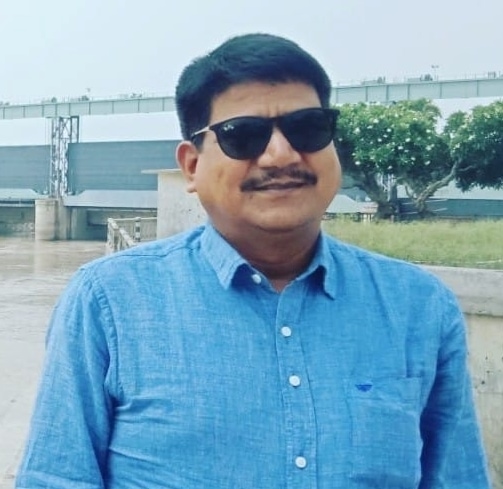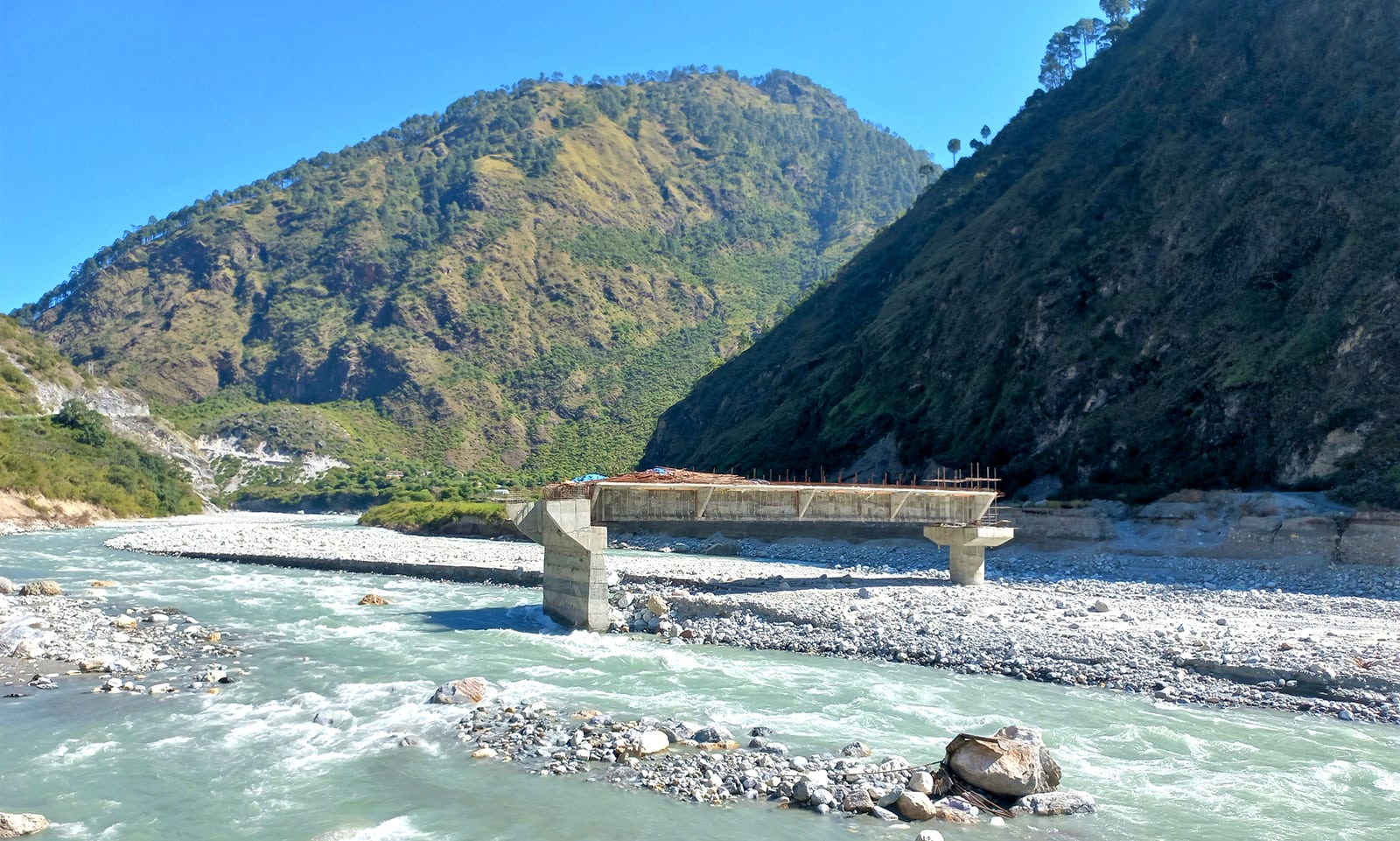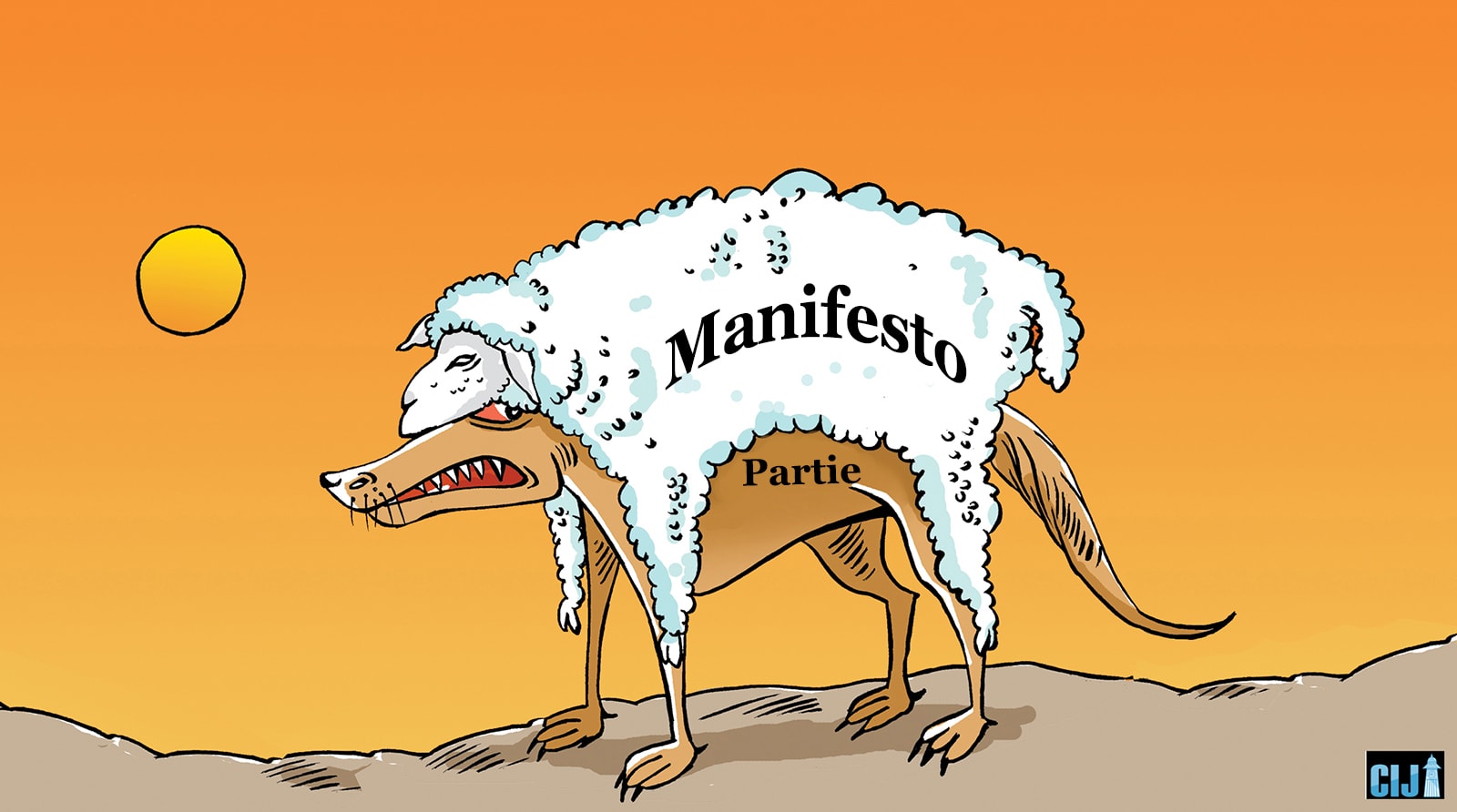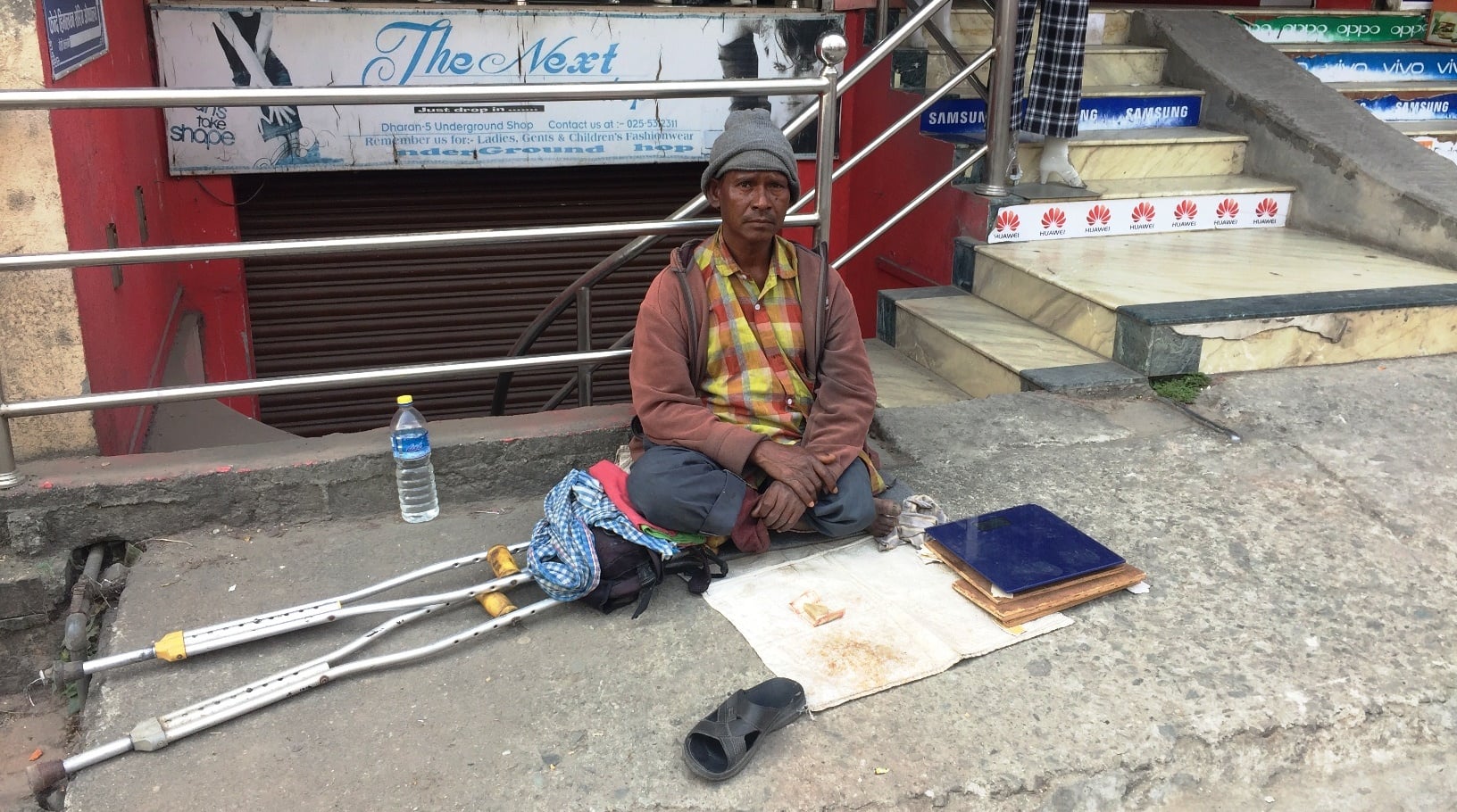A fierce competition among local governments to exploit natural resources of rivers and streams has triggered a new wave of conflict in Dang district.
Devendra Basnet: Centre for Investigative Journalism-Nepal
One can see long queues of tractors on the banks of Rapti River located in the south of Bhalubang of Dang district. Workers have not only ravaged the riverbanks, they have also dug huge trenches in the middle of the river. Sheetganga Municipality lies in the eastern side of the Rapti. The western part is surrounded by Rapti Rural Municipality, while Gadhwa Rural Municipality lies in the south. Some of the workers excavating aggregates and sand from the river hail from Sheetganga, while others come from Rapti Rural Municipality.
 “There’s a discrepancy here. When the contractors are allowed to extract from villages that are far, they say it will damage the road and the irrigation project. But they turn a blind eye when the same happens here.”
“There’s a discrepancy here. When the contractors are allowed to extract from villages that are far, they say it will damage the road and the irrigation project. But they turn a blind eye when the same happens here.”Sahaj Ram Yadav, chair of Gadhwa Rural Municipality
The site lies between two districts, but it is not demarcated. “We have been told to offload the material in the site of Sheetganga Municipality,” said Anish Chaudhary, a tractor driver. “We don’t know about the boundary.” Surprisingly, Rapti Rural Municipality has given him permission to collect the materials from the river and to transport to Sheetganga Municipality.
More interestingly, many tractors that carry the materials have no permission for excavation. The material derived from the river is transported to Dakshinkali and KGB, two crusher plants operating in Sheetganga Municipality. Hira Kumar Kumal, a laborer, said, “We follow the contractor’s instruction to transport the material to the crusher plant.”
Eye on the river
Earlier, there was a major dispute between Sheetganga Municipality and Rapti Rural Municipality regarding the exploitation of natural resources of the Rapti River. Sheetganga claimed that the entire Rapti River fell under its territory, but Rapti Rural Municipality claimed to have their right in the river as well. After the dispute, the two sides measured the area and divided between them. But the agreement was brushed aside once both sides started extracting the materials from the river. Both sides removed the materials from the river as much as they could. “There was a demarcation, but no one follows it anymore,” said Kumal.
Both sides seem unaware about the demarcation. “We had clearly demarcated the areas that fell under our respective jurisdiction,” said Jagadamba Chaudhary, vice-chair of Rapti Rural Municipality. “It’s not possible to check every day if that has been followed through.”
Gadhwa Rural Municipality has found itself in the middle of the dispute between the two sides. The rural municipality, which lies in Dang’s southern part, now faces a case in the Supreme Court. When the Rural Municipality started initial environment assessment to extract materials from the river within its area, a complaint was lodged against it at the High Court in Tulsipur. The case reached the Supreme Court after the High Court ruling allowed the rural municipality to go ahead.
In December 2018, Suman Adhikari of Gadhwa Rural Municipality registered a case at the High Court in Tulsipur claiming that the local officials were themselves behind the exploitation. Soon after, he registered another case against the rural municipality at the High Court claiming that the crusher plants had double-taxed. The Rural Municipality had decided to tax two rupees per feet for the material extracted from the river in its area. The High Court ordered the Rural Municipality not to impose a double tax. In February 2018, Suraj Bahadur Sonam, a local, filed a case in the Supreme Court, demanding to stop extraction claiming that the local officials were themselves active in illegal excavation.
The petitioner has claimed that the extraction would affect Dang-Pyuthan road as well as Praganna Irrigation Project. While the road is connected to Rapti Rural Municipality, the irrigation project lies in the rural municipality. Sahaj Ram Yadav, the chair of Gadhwa Rural Municipality, said, “There’s a discrepancy here. When the contractors are allowed to extract from villages that are far, they say it will damage the road and the irrigation project, but they turn a blind eye when the same happens here.”
Rapti Rural Municipality and Sheetganga Municipality have also ravaged the riverbed of the Rapti River in Gadhwa Rural Municipality. According to Baburam Adhikari, the ward 1 chair, they had taken 35 tractors under their control on February 8, 2019. After they came to know about the exploition of the river, Gadhwa Rural Municipality held a meeting with Rapti Rural Municipality and Sheetganga Municipality. The District Coordination Committee, responsible for monitoring the excavation of the river, was also invited to the meeting. After the meeting, all sides agreed to only extract aggregates in its area, but the work was stopped only during the day and went on in the night. According Yadav, villagers still seize tractors that haul the materials from the river.
Making profit
Claiming that the natural resources brought by the river would cause disasters, Lamahi Municipality of Dang allowed a contractor to manage it in Ward No. 5. As soon as it won the contract, the contractors started extracting materials from the river. At the time, Gadhwa Rural Municipality, ward no 7 claimed that the area was under its domain. People living in the area paid taxes to Gadhwa Rural Municipality. Rahul Dev Chaudhary, the chair of the ward, said, “How come it falls under Lamahi Municipality whereas we are receiving the tax?”
 “The dispute can be very big later. So, all the heads of local bodies should resolve the issue.”
“The dispute can be very big later. So, all the heads of local bodies should resolve the issue.”Kul Prasad KC, Mayor of Lamahi Municipality
Prakash Bhandari, chairman of Lamahi Municipality Ward No. 5, claimed that the work on disaster management along the Rapti River started after clearly demarcating the river. “The Rapti River borders Gadhwa and Lamahi. The work has been done according to this demarcation. They are unnecessarily creating tensions,” said Bhandari. Kul Bahadur KC, Mayor of Lamahi Municipality, said the issue came to the fore due to lack of understanding on the part of local officials of Gadhwa. “Our taxpayers live across the Rapti as well. We need to use the natural resources based on the river’s flow,” he said.
The excavation at the Rapti River is the main economic source of the local governments. But it is also causing tensions. For example, in June 2018, Babai Rural Municipality called for tender on the extraction of natural resources of Baulaha Khola after an environmental impact assessment. The site, which will be handed to the contractor for three years, is under Shantinagar Rural Municipality. According to Kaman Singh Dangi, Babai Municipality had called for bidding without consulting his office.
In February 2018, Rajpur Rural Municipality called for bidding to extract materials from the Rapti River under its area. Lamahi Municipality protested after the contractor extracting material from areas under its domain. The dispute reached the District Coordination Committee. According to its coordinator Jitendra Man Nepali, the conflict could have reached a boiling point if it hadn’t been resolved on time.
A river claimed by four
Gadhwa Rural Municipality, which is called “the other side of the Rapti,” said that the river should be divided according to the government measurement of 1971. If it has its way, most of the river will fall under the rural municipality. It will also substantially reduce the share of Lamahi Municipality and Rapti Rural Municipality on the river. That’s because the river has changed its course and diverted towards Gadhwa. That’s why Gadhwa’s taxpayers live in Lamahi and Rapti. “If we don’t base it on the old measurement, what will we do to the land on the other side of the shore?” said Sahaj Ram Yadav, the chair of Gadhwa.
But in some areas belonging to Lamahi and Rapti also fall under Godhwa. Kul Bahadur KC, the Mayor of Lamahi Municipality, argued that the demarcation should be on the basis of current course of the river. “The land on the either side of the river should belong to the concerned municipality. This option will deliver justice to the people,” he said.
The natural resource from the river is a major source of revenue for local bodies here. Mayor KC doesn’t find the idea of dividing the river among local bodies easy. A small matter on the division of natural resource could cause big tensions. This can lead to conflict among local bodies, he said.
Rajpur Rural Municipality, which is on the other side of the shore, claims that the area on the other side also belongs to it. On the other hand, the rural municipality has contracted the sites in Materia, Gangadi of Rajpur. According to Lokraj KC, it’s important to know the land that is under its area than debating on which side of the river it is. He claimed that the rural municipality used the Rapti River in its area.
Though the dispute has been resolved for now, the local bodies are yet to formulate policies on use of natural resources from its rivers. “The dispute can be very big later, so all the heads of local bodies should resolve the issue,” said Kul Prasad KC, Mayor of Lamahi Municipality.
According to the Local Government Act, the local bodies have right to preserve and use natural resources. However, the federal government has formed district coordination committee (DCC) to monitor the excavation of river. But, dispute between DCC and local bodies has emerged. The local bodies have accused the DCC of seeking to establish ownership of the river. The local bodies have accused the DCC of infringing on their constitutional rights.
In February 2018, a contractor was found using excavator to extract materials on rivers contracted by Babai Rural Municipality. The DCC detained the excavator and tippers and released after letting them sign papers. The rural municipality released a statement saying Jitendra Man Nepali, coordinator of the District Coordination Committee, obstructed development work.
The DCC also issued a press release countering the rural municipality’s statement. In the release, the DCC clarified that it wanted to stop the illegal work. Bhuwaneshwar Poudel, the chair of the rural municipality, said that the DCC had been terrorizing local governments. “This terror is not tolerable. The District Coordination Committee must correct itself,” he said.
These cases illustrate there is a real risk of conflict among local bodies due to extraction of natural resources of rivers.



